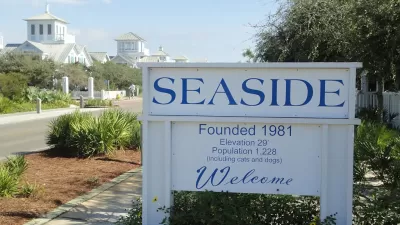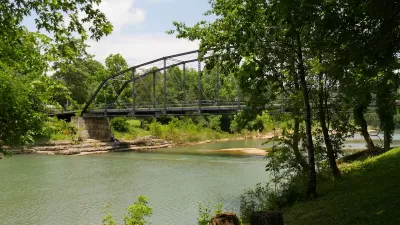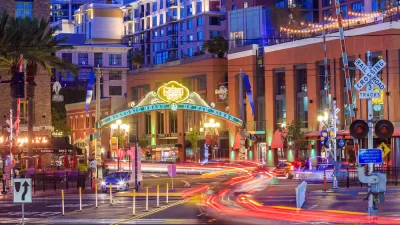Robert Steuteville discusses the slow, phased emergence of the New Urbanism. We are only partway through a change that will take generations. We are now immersed in the revitalization of cities. More phases will come.

The New Urbanism began mostly as a large-project, greenfield movement. Some new urbanists concentrated on infill in the 1980s and 1990s, but their efforts attracted less media attention and investment.
Intellectually, the movement aspired to revitalize entire regions—especially historic cities and towns, which were, after all, the inspiration for a return to walkable places. However, 30 years ago most cities were in deep trouble, so just about every large developer focused instead on the suburbs. New urbanists looked at the damage inflicted by sprawl and fervently sought to reform the system.
That is what I call the first phase of New Urbanism, in which traditional neighborhoods developments (TNDs), inspired by historic neighborhoods, were built as alternatives to conventional masterplanned communities. TNDs like Seaside, Kentlands, Orenco Station, New Town at St. Charles, Habersham, and Celebration represent this era well; they showed themselves to be laboratories of ideas. These were private-sector projects that created pockets of urban place by overcoming legal and institutional barriers to compact development.
That phase lasted right up to the housing crash in 2008. Developers proved that mixed-use neighborhoods, with main streets and centers, could be built and that the public would buy into them. Long-neglected building types were reintroduced into many American markets: Among them were shopfront houses, small apartment buildings, granny flats, courtyard housing, liner and flex buildings, various mixed-use buildings, and small-lot single houses with usable porches and rear garages...
[Read more at the link below]
FULL STORY: The four phases of New Urbanism

Alabama: Trump Terminates Settlements for Black Communities Harmed By Raw Sewage
Trump deemed the landmark civil rights agreement “illegal DEI and environmental justice policy.”

Planetizen Federal Action Tracker
A weekly monitor of how Trump’s orders and actions are impacting planners and planning in America.

The 120 Year Old Tiny Home Villages That Sheltered San Francisco’s Earthquake Refugees
More than a century ago, San Francisco mobilized to house thousands of residents displaced by the 1906 earthquake. Could their strategy offer a model for the present?

In Both Crashes and Crime, Public Transportation is Far Safer than Driving
Contrary to popular assumptions, public transportation has far lower crash and crime rates than automobile travel. For safer communities, improve and encourage transit travel.

Report: Zoning Reforms Should Complement Nashville’s Ambitious Transit Plan
Without reform, restrictive zoning codes will limit the impact of the city’s planned transit expansion and could exclude some of the residents who depend on transit the most.

Judge Orders Release of Frozen IRA, IIJA Funding
The decision is a victory for environmental groups who charged that freezing funds for critical infrastructure and disaster response programs caused “real and irreparable harm” to communities.
Urban Design for Planners 1: Software Tools
This six-course series explores essential urban design concepts using open source software and equips planners with the tools they need to participate fully in the urban design process.
Planning for Universal Design
Learn the tools for implementing Universal Design in planning regulations.
Clanton & Associates, Inc.
Jessamine County Fiscal Court
Institute for Housing and Urban Development Studies (IHS)
City of Grandview
Harvard GSD Executive Education
Toledo-Lucas County Plan Commissions
Salt Lake City
NYU Wagner Graduate School of Public Service





























